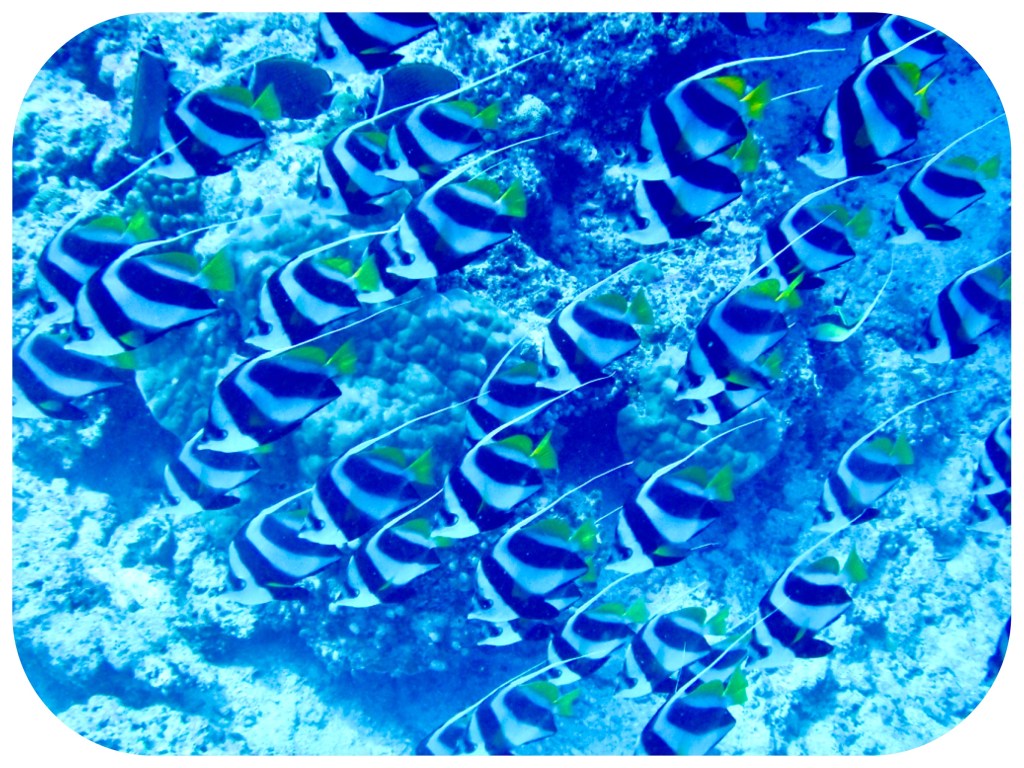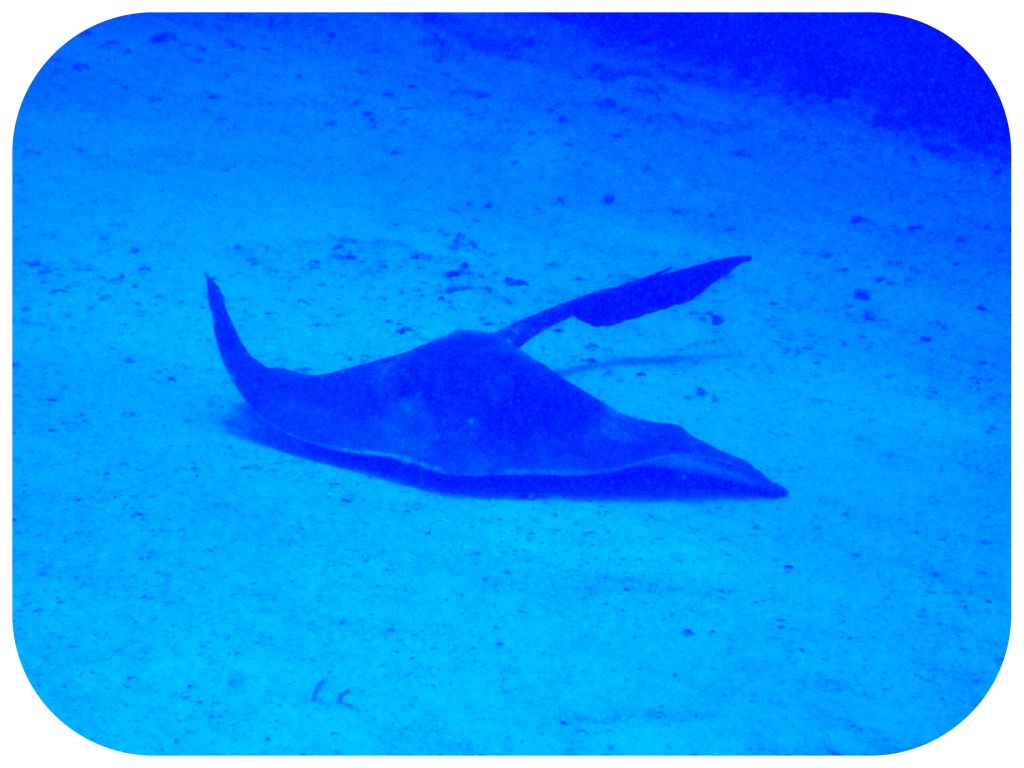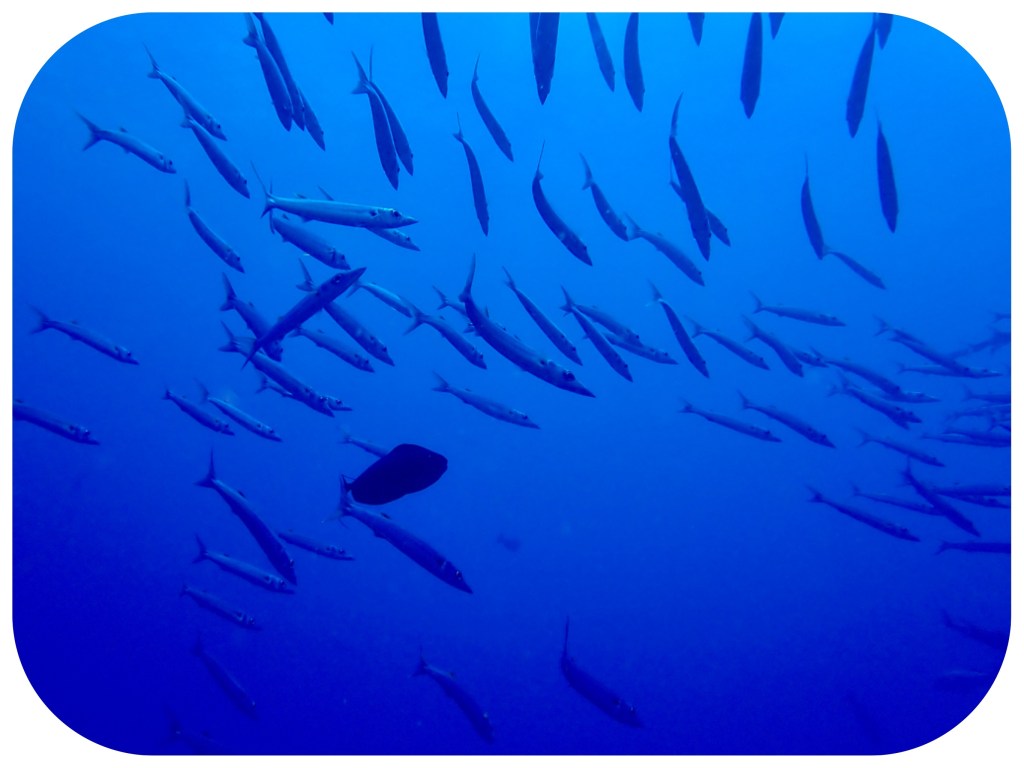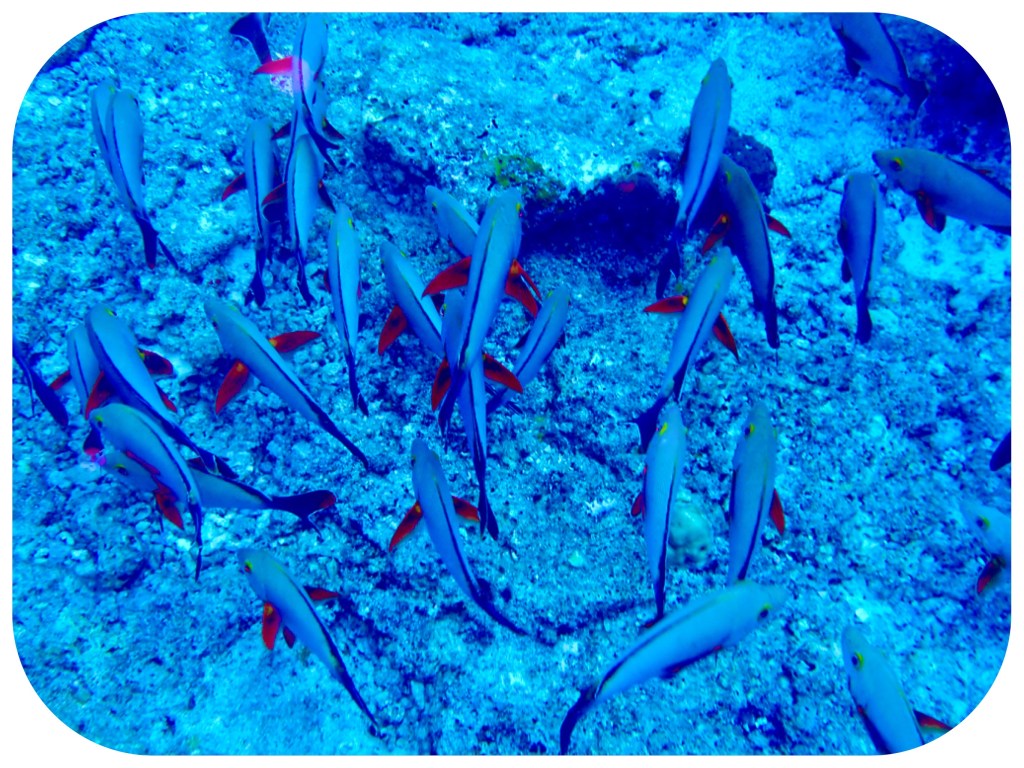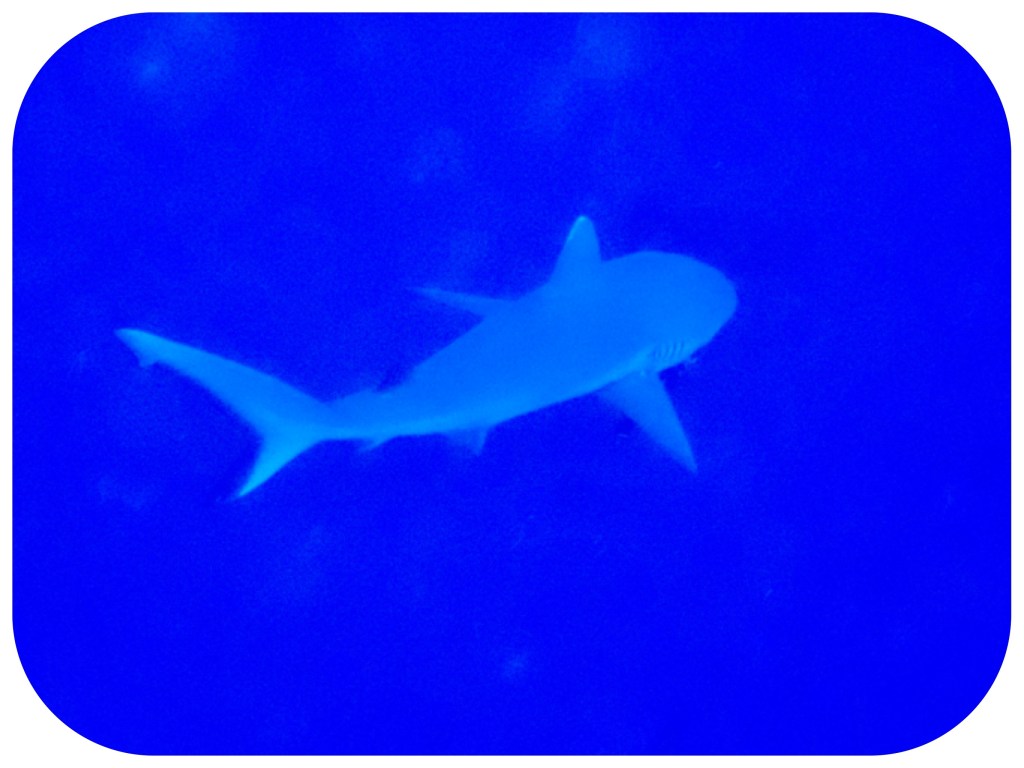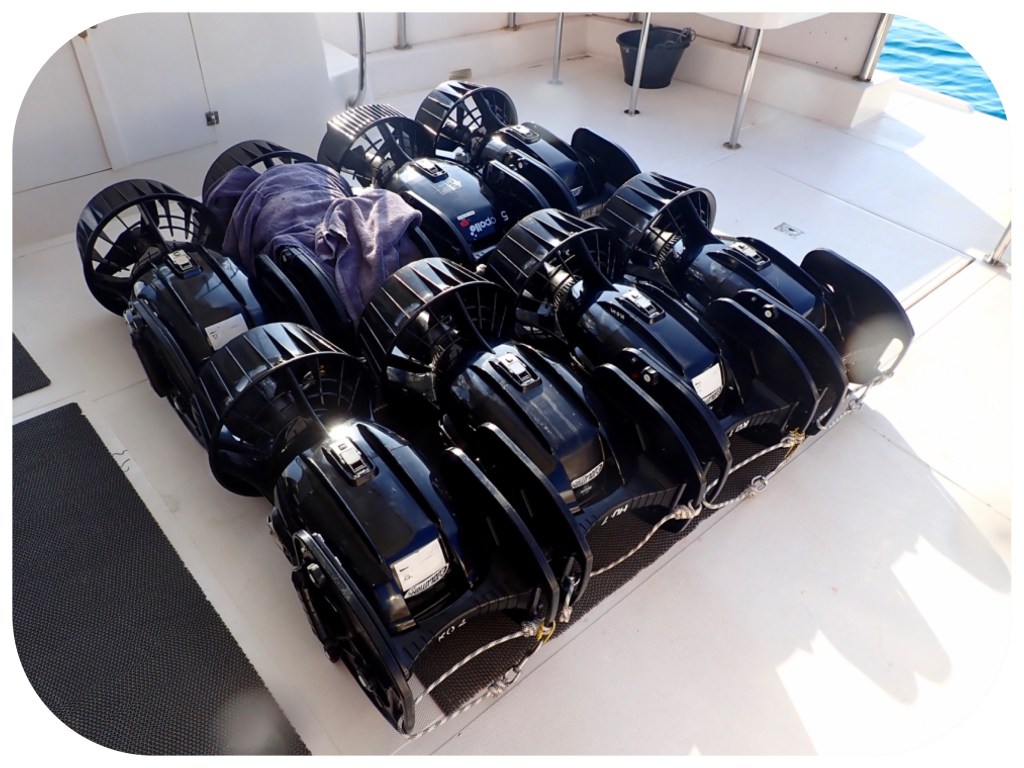Scooter Diving In The Kahlifushifaru Corner And The Fushivaru Corner Dive Sites, In The Lhaviyani Atoll, Maldives
Scooter Diving In The Kahlifushifaru Corner And The Fushivaru Corner Dive Sites, In The Lhaviyani Atoll, Maldives
I have never tried scooter diving before.
In fact, I have not even stayed at any resort that offered scooter diving.
My only knowledge of scooter diving comes from watching documentaries on TV, in which ocean explorers used scooters to explore wrecks or cover vast distances in a short time.
I was not sure that I would like it, because the dive sites that tend to be good for scooter divers are deep blue channels with very strong currents.
But I was not about to pass up an opportunity to learn how to scooter, and then to dive with a scooter.
The instructions required about a two hour lesson, an hour of theory about how to run the scooter and what to watch out for, followed by a full hour of scooter dive practice.
I had just finished a two tank dive, and we were on our way back to the resort to have lunch, when one of the guides asked me if I wanted to join the scooter divers tomorrow on two deep channel scooter dives.
I said yes, which meant that instead of resting after lunch, I studied how to scooter dive until early evening.
I showed up at the dive shop in the late afternoon, where I was the only one who learned how to scooter that day.
After explaining to me how the scooter works, and the different ways I can ride it underwater, we got into our wetsuits and went diving.
After jumping into the water, I received the 44 pound heavy scooter from the boat crew.
I needed to clip the rope of the scooter to my BCD, so if I lose it underwater, it would still be attached to me.
After lowering the scooter into the water, it became so light and easy to handle, that the scooter’s buoyancy weight was only negative 1 pound.
There are two ways to ride this scooter.
One is by holding it with both hands, while the other and preferred way, is to ride with it between your legs.
This allows a diver to have free hands, to take pictures, signal to other divers and operate other needed gear.
When the scooter is running at full power, it is FAST, or at least it felt so fast.
I am so used to feeling small and vulnerable underwater, that the sensation of being fast and covering long distances was totally new to me.
The first hour of scooter diving went very well, and I was so excited for the next day’s scooter dive trip.
I was happy to see that the other scooter divers were the fabulous German people whom I liked very much.
They were all experienced scooter divers.
I was the only one who was a novice at scooter diving.
We all jumped into the ocean, got our scooters and descended.
It was easy and fun.
It was also very empowering to be motorized underwater, although we could easily slow down to see whatever we wanted, stop to observe the many sharks and rays we saw, and go through schools of barracudas and tunas.
The current was very strong in some places, and I had to hold onto my regulator so it would not be pulled out of my mouth by the strong currents.
We did two dives that day, the KFFC and the Fushivaru Corner.
Kahlifushifaru Corner (KFFC) gently slopes away as the outreef meets the channel bringing water in and out of the Lhaviyani Atoll.
The corner offers some small terraces and overhangs where you can normally find painted rock lobsters hiding inside.
But with a scooter, we did not stop to spot hiding lobsters.
We saw Stingrays feed in the sandy areas, as well as moray eels.
We saw a big napoleon wrasse and turtles, as well as some bigger fish.
Many Grey reef sharks were patrolling the waters, along with many eagle rays.
Because the current was very strong, we saw silver-tip sharks that come in to be cleaned on the channel edge.
At the break between dives, the other divers said that this was a difficult dive for a second time scooter diver like me.
They said they all held onto their own regulators to keep them in their mouths, and complimented me on how well I did for such difficult current conditions.
Our next scooter dive was at the Fushivaru Corner dive site, which lies within a 'Marine Protected Area' with a staggering amount of fish life.
On the corner we scootered among large schools of snappers and jack fish.
At the channel edge, we saw schools of tuna and a large school of barracuda, more eagle rays and grey reef sharks.
It is a very different experience to do scooter diving.
You move fast and see mostly big stuff.
The scooter doesn’t produce any emissions.
It is a battery operated propulsion device, with a battery that is fully insulated inside the scooter.
At the end of the second dive, four of the German divers put Covid-19 masks on their regulators, and the guide took photos of them, as a sweet memory of their diving trip during covid times.
I enjoyed my experience of scooter diving.
I loved the way you ride it and navigate it by turning your whole body, since it has no other way to turn right or left, up or down.
You simply rotate your spine and body to the direction you want to go, while the scooter is between your legs.
Even though I had great fun, I cannot imagine it replacing my love of slow diving with a light, exploring coral reefs and looking for colorful creatures.
Sorry for the low quality photos in this post. The visibility was very low and my camera’s automatic settings are broken.
With love and speed,
Tali



